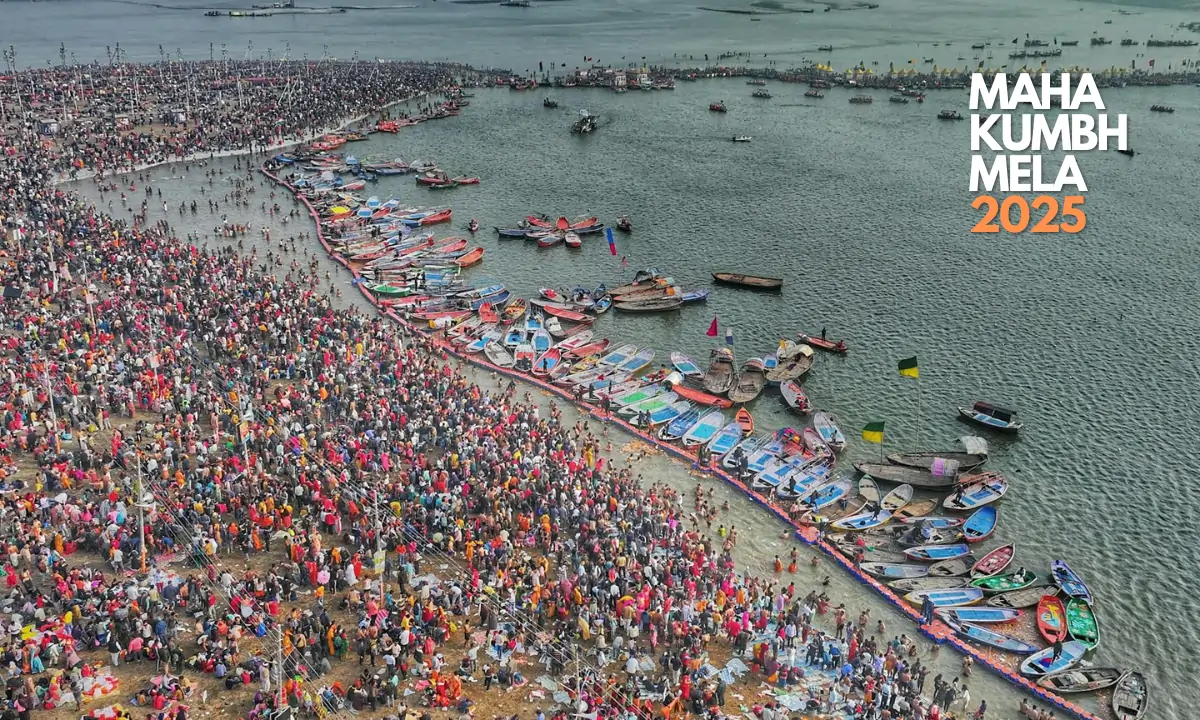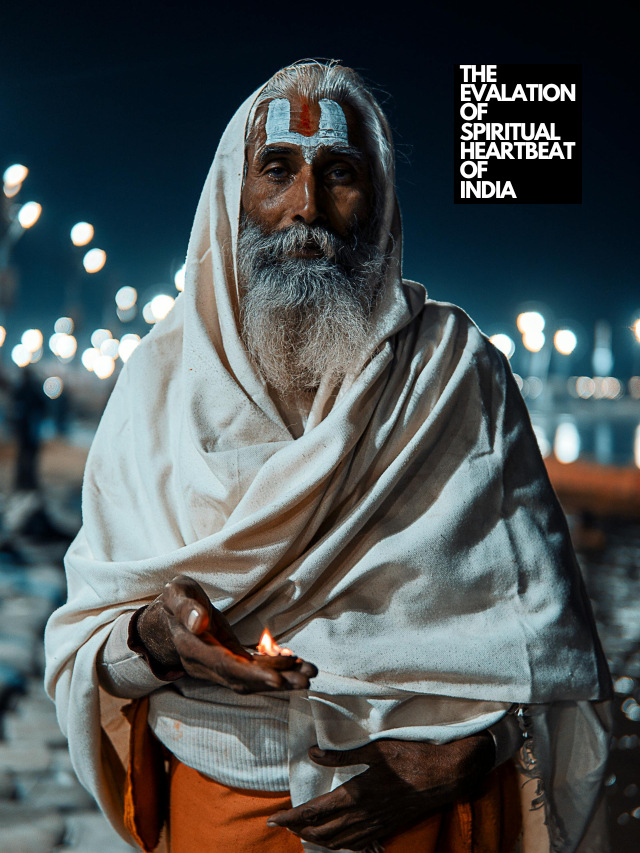One of the largest spiritual gatherings in the world has been considered Maha Kumbh Mela where millions of devotees and pilgrims gathered for a sacred pilgrimage. Held Every 12 years, the Maha Kumbh Mela has been organised in four specific parts of India on a rotational basis. This year, it is organised in Prayagraj in the northern state of Uttar Pradesh as decided by the specific planetary alignments. In this mela, every devotee comes with their own unique stories seeking spiritual rejuvenation and a deep connection to their faith.
You might have heard about the viral story of the woman, Kamya, who shared her experience of attending the ongoing mela and getting the divine sight of Naga Babas. In her X account, she wrote about her experiences with some photos and videos, “Finally got darshan of the Naga Sadhus at 6 am after waiting for 2.5 hours and being herded like sheep.”
However, like Kamya, millions of people attend the mela and it has been expected that 400 million people will attend this mela this year, which will held from 13 January to 26 February. Even the last Maha Kumbh Mela which was held in 2013, was attended by 120 million people. So why do people in such vast crowds attend this mela all over the world? What is the allure of this spiritual gathering and why is it held only once every 12 years?
The evaluation of Maha Kumbh Mela
The evaluation of Maha Kumbh Mela is rooted in the mythological history of Hindus. First of all, it is necessary to understand, the meaning of Maha Kumbh Mela to understand its religious and spiritual significance. Well, in Sanskrit, Kumbh refers to “pitcher” or “pot” and henceforth, the story of this mela relates to Samudra Manthan (churning of the ocean).
Samudra Manthan does not have any specific historical timeline; however, in Mahabharata, Ramayana, Bhagvata Purana and Vishnu Purana, the mention of this mythological event has been found. As per this mythological event, 92 Devas (gods) and 88 Asuras (demons) collaboratively churned the ocean under the aegis of Vishnu to produce Amruta (divine elixir of immortality).
The King of Serpents, Vasuki, became the churning rope, where Asuras hold the head of Vasuki and Devas hold the tail. When the divine physician Dhanvantari arrived with a Kumbh (pitcher) of nectar, the conflict between Asuras and Devas started to claim the nectar.
To protect the Kumbh of Amruta, Jayant, Indra’s son fled with the Kumbh. When Jayanta along with the Sun, his son Shani, Brihaspati (Jupiter Planet) and the Moon was running to protect the Kumbh, Asuras followed them. Jayanta takes 4 halts during his fleet and four drops of Amruta split into four sacred places of Earth, Prayagraj, Haridwar, Nasik and Ujjain. Henceforth, in these four places, the Maha Kumbh Mela has been celebrated every 12 years.
Hindu mythology also holds the answer to why this festival happened only once in 12 years. In our mythology, it has been mentioned that 1 day of the Hindu God is similar to 1 year on Earth. Jayanta completed 12 days of journey to reach heaven and henceforth, it has been believed that the mela is celebrated every 12 years in the four sacred places on a rotational basis.
आस्था का महासिंधु-एकता का महाकुम्भ…
— Yogi Adityanath (@myogiadityanath) January 14, 2025
तीर्थराज प्रयाग में आज महाकुम्भ के प्रथम 'अमृत स्नान' और मकर संक्रांति के पावन अवसर पर सभी अखाड़ों और घाटों पर पुष्पवर्षा सनातन संस्कृति का वंदन, श्रद्धा का अभिनंदन और आस्था को नमन है।#महाकुम्भ_अमृत_स्नान pic.twitter.com/dE4EpALI9q
We get a mention of Kumbha Mela in the writings of the Chinese traveller, Hiuen Tsang when he visited India during the reign of Harshavardhana, also known as Harsha. From 606 AD to 647 AD, Harsha reigned in the northern part of India. So, it can be said that the origin of this mela has been dated back at least 1,400 years ago if we consider the historical context.
Mythological and historical connection of Prayagraj
As we all know, the location of Maha Kumbh Mela is decided based on the planetary alignments, and henceforth, Prayagraj has been chosen in the rotational system. Prayagraj, which, was formerly known as Allahabad, belongs to one of the sacred locations where the drop of Amruta fell during the 12-day journey of Jayanta.
This city of Uttar Pradesh is situated in Triveni Sangam, where three holy rivers of the Ganges, Yamuna and the mythical river Saraswati confluence. It has been believed that taking a dip in this Triveni Sangam during the period of this mela helps to clean the soul and wash away sins.
Besides this mythological significance, this place also holds some historical context also. Historically, this city was an epicentre of the Mughal Empire during 1575 AD and later, in 1801 AD, it became important under British rule. Several scholars, saints and revolutionary movements have centred in this city. This city nurtures a mixed culture of Hindus, Muslims, Christians and Jains.
Cultural and Spiritual Insights
Beyond a religious celebration, the Maha Kumbh Mela is also considered a celebration of faith, culture and unity. Millions of people attend this celebration from different walks of life, communities and regions. Devotees take part in this celebration to begin their journey of self-discovery by taking a dip in the holy water of Triveni Sangam of Prayagraj.
🚨 More than 1 crore (10 million) people visited on day 1 of Maha Kumbh Mela 2025. pic.twitter.com/JdPpDBT1D5
— Indian Tech & Infra (@IndianTechGuide) January 13, 2025
It has been also expressed by several devotees that they feel unity, peace and enlightenment when they meet with the Naga Sadhus and dip into the holy water. The rich culture of India has been highlighted through this mela where ancient rituals, chants of Naga Sadhus and spiritual energy have been found. The Maha Kumbh Mela creates a space of cultural exchange and sharing of spiritual wisdom that highlights the rich Indian culture and heritage.
Governmental steps and global aspects
This mela goes beyond the national boundaries. UNESCO recognized it as the Intangible Cultural Heritage showcasing how this mela has been a critical part of the shared cultural legacy of humanity. However, millions of tourists have visited Mela across the world. This year, Laurene Powell Jobs, the wife of Steve Jobs, attended this mela to seek spiritual blessings.
A diverse range of people including spiritual seekers, photographers, scholars and more attracted to avail the spirituality of this mela and showcase the significance of this event in front of the world. Henceforth, it became the universal event that helps people to feel a deeper connection and gain deeper meaning in their lives.
The Indian government and local authorities make a collaborative approach to organise this Mela and set up an expansive infrastructure including tent cities, medical services, security arrangements, sanitation facilities and so on. During this period, special trains and buses have also been introduced by the government to manage the crowd. Online mobile apps and sites are also integrated to keep people updated with real-time conditions and ensure smoother coordination.
The government has also adopted sustainable practices to ensure the sanctity of the Triveni Sangam. Different initiatives have been taken like reduction of waste, raising awareness of river preservation, promoting eco-friendly materials and so on.
The Maha Kumbh or Poorna Kumbh rarely occurs when the Moon, the Sun, the Mercury and Jupiter align together and this event happens once in 144 years. If you attend this rare event, it might be a great opportunity to become one of the fortunate souls to connect with the universe and take spiritual energy.
FAQ
What is the Maha Kumbh Mela?
The Maha Kumbh Mela is one of the largest spiritual gatherings in the world where millions of devotees and pilgrims gather for a sacred pilgrimage. Held Every 12 years, the Maha Kumbh Mela has been organised in four specific parts of India on a rotational basis.
Where is the Maha Kumbh Mela held this year?
This year, it is organised in Prayagraj in the northern state of Uttar Pradesh as decided by the specific planetary alignments.
What is the significance of the Maha Kumbh Mela?
In Sanskrit, Kumbh refers to “pitcher” or “pot” and henceforth, the story of this mela relates to Samudra Manthan (churning of the ocean).
Why is the Maha Kumbh Mela celebrated every 12 years?
In our mythology, it has been mentioned that 1 day of the Hindu God is similar to 1 year on Earth. Jayanta completed 12 days of journey to reach heaven and henceforth, it has been believed that the mela is celebrated every 12 years in the four sacred places on a rotational basis.
What is the mythological connection of Prayagraj to the Maha Kumbh Mela?
Prayagraj, which was formerly known as Allahabad, belongs to one of the sacred locations where the drop of Amruta fell during the 12-day journey of Jayanta.
What cultural and spiritual insights does the Maha Kumbh Mela offer?
Beyond a religious celebration, the Maha Kumbh Mela is also considered a celebration of faith, culture and unity. Millions of people attend this celebration from different walks of life, communities and regions. Devotees take part in this celebration to begin their journey of self-discovery by taking a dip in the holy water of Triveni Sangam of Prayagraj.



